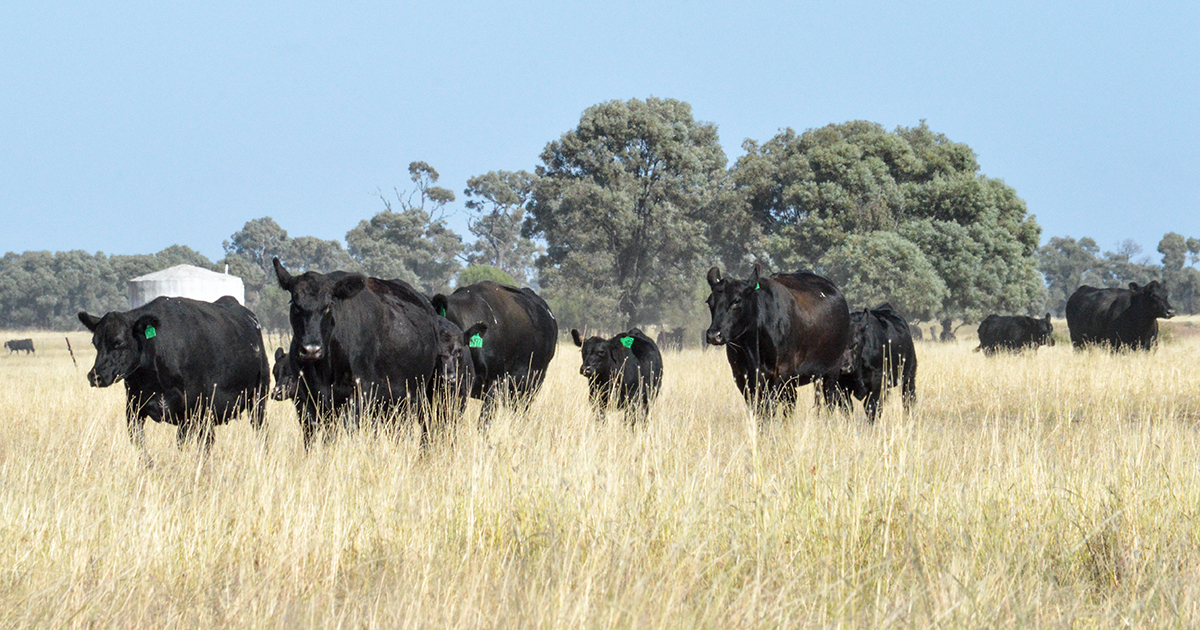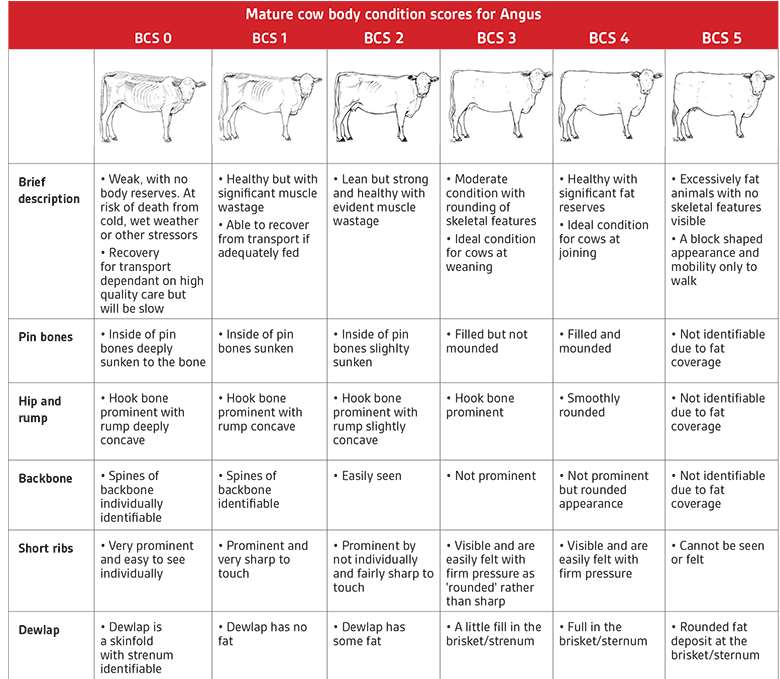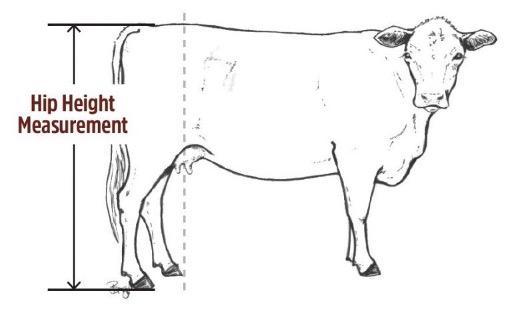What you need to know about mature cow composition traits


During the 2024 TACE Enhancements, the mature cow height and mature body condition traits transitioned from RBVs to EBVs. As part of this process our genetic improvement team have re-evaluated the genetic correlations between mature cow traits and live ultrasound and carcass fat depth, measured in young animals, to aid breeders to make more informed decisions.
Profit drivers for beef producers are commonly linked to growth and carcass traits. However, to continue to make more informed selection decisions for overall herd profitability, consideration of mature cow traits that impact the performance of the cow herd will be essential. Mature Body Condition score (MBC), Mature Cow Height (MCH), and Mature Cow Weight (MCW) should be considered for their impact on the efficiency of the cow herd and tailored to your environmental conditions and market demands.
Current selection practices often rely on traits measured in younger animals, such as live ultrasound and carcass fat depth, to infer mature cow body condition and ‘doing ability’ of females. To enhance our understanding for future selection decisions, our genetic improvement team have been exploring the genetic correlations between mature cow traits and fat-depth traits, aiming to determine how selection for fat depth in young cattle effects mature cow characteristics. Helping breeders make better-informed decisions for their breeding programs.
Through analysis of the data measured, by Angus Australia members and the Angus Sire Benchmarking Program, it is evident that variation exists in the mature cow composition traits. The below averages and standard deviations are calculated from the data submitted, only representing a proportion of the breed’s females.
Heritability Estimates
Only part of the variation that we observe among animals is due to genetic differences. The majority of the variation is generally due to non-genetic factors such as differences in environment and nutrition. The degree to which genetic differences influence performance varies from trait to trait. This is explained by differences in the “heritability” of the traits.
The moderate to high heritability of the mature cow composition traits indicates that there is opportunity for genetic improvement of these traits via genetic selection.

Genetic correlations between two traits describe how much the same genes influence the two traits. In other words, how the two traits change in relation to each other. This relationship is expressed as a number between -1 and +1.
Genetic correlations can be either positive or negative. A negative correlation indicates that as one trait increases, the other decreases, whereas a positive correlation implies that both traits tend to increase or decrease together.
Additionally, genetic correlations can be described as strong or weak. Correlations closer to the absolute figure of -1 or +1 describe cases where a change in one trait is strongly associated with a change in the other, while lower figures (closer to 0) basically mean that for those pairs of traits there will be no pattern to how one changes in relation to the other.
MCW has a strong positive correlation with both MCH (0.83) and MBC (0.87); while MCH and MBC have a weak positive correlation of 0.21. This means that increases in MCW are often associated with increases in MCH and MBC, and vice versa. However, increases in MBC are less likely to also increase MCH.

There are slight variations in the collection guidelines for the mature cow traits. This is due to MCW being analysed via BreedPLAN and MCH and MBC being analysed internally at Angus Australia.

For traits to be analysed ensure mature cow traits are recorded within 2 weeks of calves weaning weight (200d weight), preferably at the same time. Calves should be between 80 & 300 days of age at weaning. TACE currently only includes 4 records from each animal for each mature cow trait. It is recommended, for ease of management, that all cows are recorded and let the analysis determine which cows have reached the maximum number of records included in the analysis.
When submitting mature cow traits ensure that the correct trait code is applied, depending on time of recording.
BCJ Body Condition Score – Joining
BCW Body Condition Score – Weaning
BCP Body Condition Score – Pre-calving
HHJ Hip Height – Joining
HHW Hip Height – Weaning
HHP Hip Height – Pre-calving
JW Mature Weight – Joining
MW Mature Weight – Weaning
PCW Mature Weight – Pre-calving
Mature cow weight should be recorded using an accurate scale, recorded to the nearest kilogram.
Mature cow body condition scores are collected using a 0-5 scoring scale based on the visual appearance of the animal. Half scores (i.e. 1.5,2.5,3.5,4.5) can be used to identify animals who exhibit a body condition, which is intermediate to the scores listed.
In an ideal Angus beef herd, where the cows have raised a calf to 200 days prior to weaning, it would be expected that the majority of animals would have a score of 2, 2.5 or 3, with a small percentage of animals receiving scores above 3. Weaning is typically the time of lowest condition score in the production cycle of the cow.

Mature cow height should be taken using an accurate tape measure or ruler, recorded to the nearest centimetre.
While measuring techniques vary slightly, it is important to use a consistent technique for the whole group.
One method involves using a level board in the crush to measure height from the hook bone to the board, subtracting this from the known height of the board above the ground.
Mature cow height should only be recorded when the animal is standing stationary on level ground.

If you would like to discuss this information further, please contact the Extension team.
Nancy Crawshaw
Acting Extension Manager
Ph: +61 2 6773 4643
Mob: 0436 337 652
E: nancy.crawshaw@angusaustralia.com.au
Hanlie Jansen
Extension Officer
Ph: +61 2 6773 4641
Mob: 0427 943 436
E: hanlie.jansen@angusaustralia.com.au